63 Easy Backpacking Food Ideas
This post may contain affiliate links.
Meal planning for your next backpacking trip? We’ve compiled our favorite backpacking food, ingredients, and meal ideas to help you get started. Find out what food is best for hiking, discover new ingredients, and get inspired by some of our delicious DIY backpacking meals.

Backpacking is a great way to unplug, immerse yourself in nature, and challenge yourself both physically and mentally. While there’s a lot of natural beauty to take in, experienced backpackers know that no matter how spectacular the scenery is, much of the day is spent thinking about the next meal!
But figuring out what food to pack can a be challenge all on its own! Since you’ll be carrying all of it on your back, backpacking food needs to strike the right balance between nutrition, weight, and ease of preparation.
In this post, we share our favorite backpacking food ideas from hundreds of miles hiked over the past few years. From freeze-dried options to homemade meals, you’ll find all kinds of filling and lightweight trail food to help keep your energy up and your taste buds satisfied.
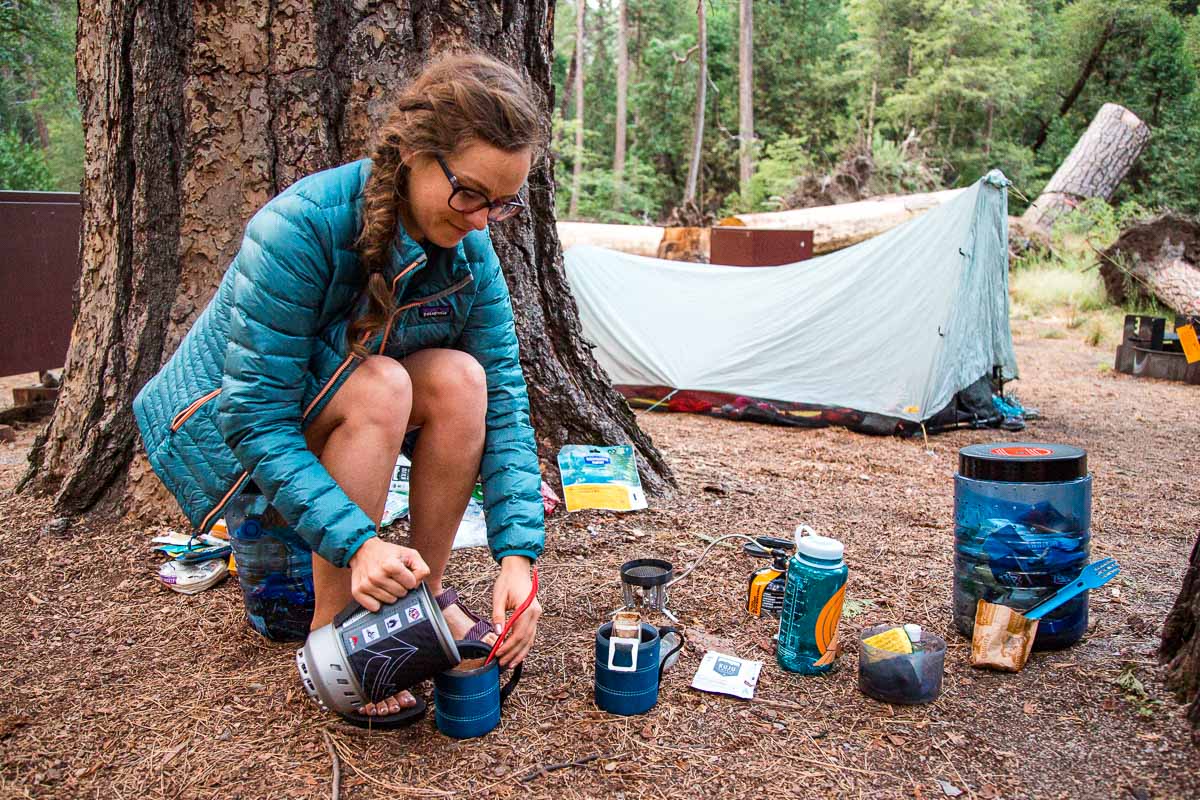
Backpacking breakfast ideas
A good day on the trail starts with a solid breakfast. If you want to get through the morning without running out of steam, it’s best to start with some calories in the tank.
Seasoned backpackers will be familiar with the tried-and-true instant oat pouches, but thankfully there are a lot more options to try out!
Here are some great backpacking breakfasts to check out.
Freeze-Dried or Dehydrated Meals
When you need a substantial meal to start the day, it doesn’t get any easier than adding boiling water to a meal pouch. Here are some of our favorite freeze-dried and dehydrated breakfasts:

OvaEasy Eggs
If you don’t mind cooking in the morning, OvaEasy’s powdered egg crystals are surprisingly close to the real thing! Enjoy scrambled eggs on their own, with dehydrated hash browns, or as a veggie scramble.
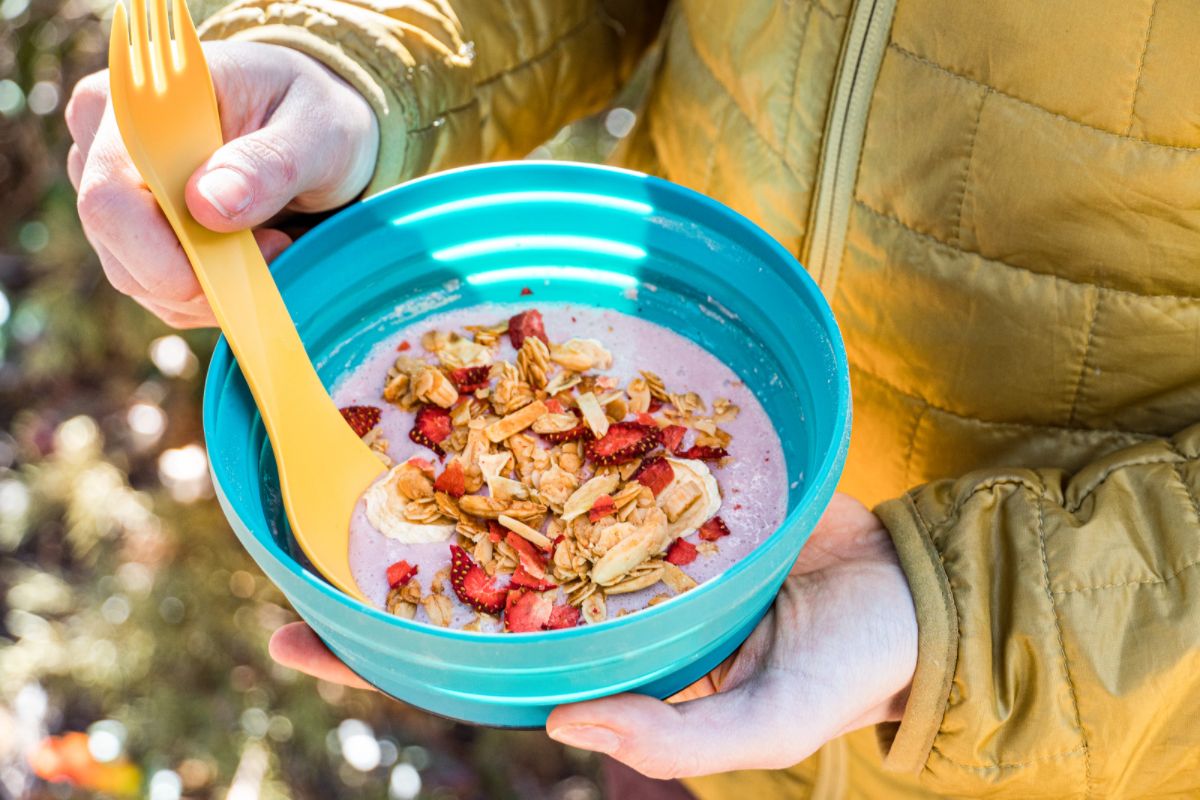
DIY Yogurt Parfait
This easy DIY meal uses freeze-dried “yogurt melts” (you can usually find them in the baby food aisle), granola, and dried fruit. Get our recipe here!
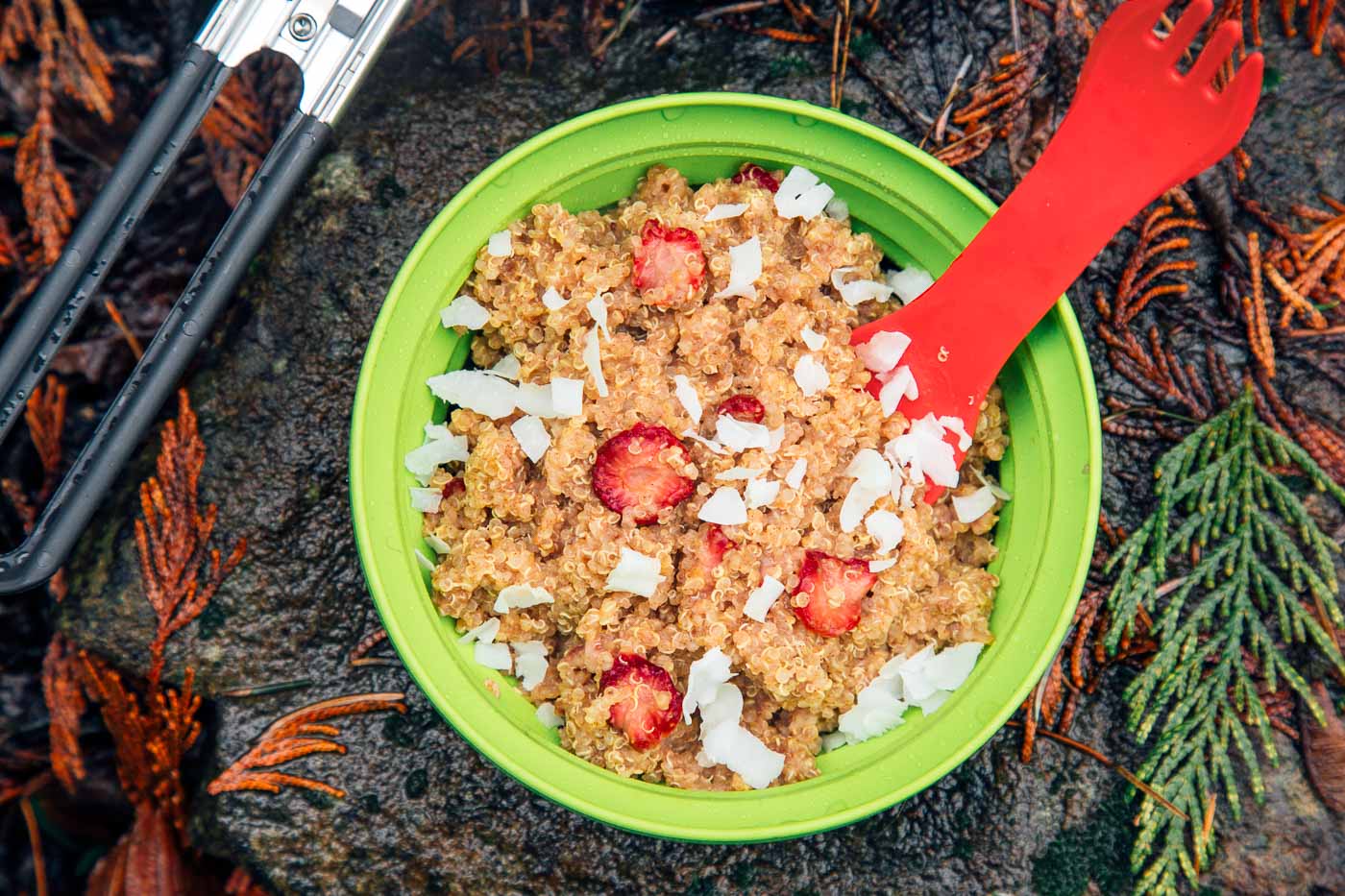
Dehydrated Quinoa Porridge
Loaded with protein and packed with calories, our Quinoa Porridge dehydrator recipes are a great option if you have access to a food dehydrator. Start with one of these or customize it with your own favorite flavors!
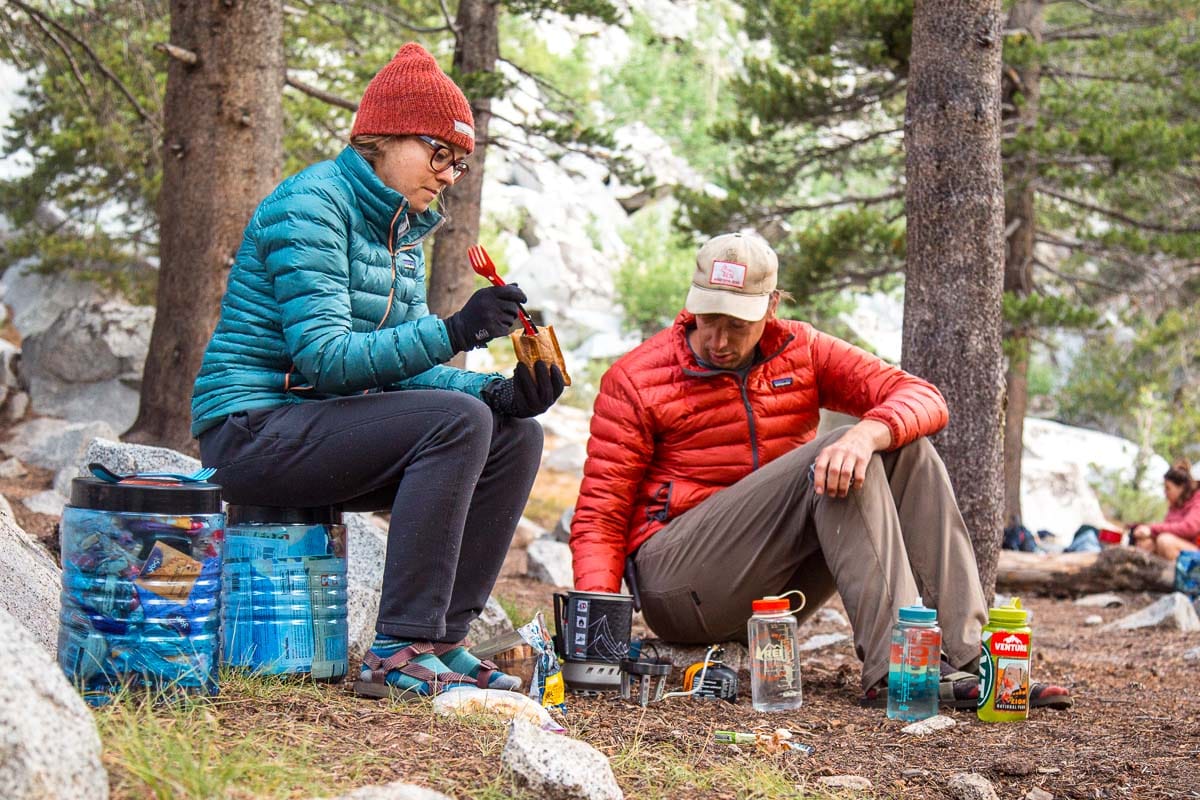
Instant oatmeal
Instant oatmeal is quick, easy, cheap, and totally customizable. Just add hot water. Pro Tip: Use the packet as your bowl. Just tear off the top, pour the water in, and stir. The bag will get hot, but won’t leak. Up the calories by adding coconut or whole milk powder, or stirring in a packet of nut butter.
Bobo’s Oat Bars
A no-cook “breakfast” bar is a great grab-and-go option for anyone who wants to streamline their morning routine. It can also be nice for people who don’t wake up hungry and want to get a little hiking done before eating. We particularly like Bobo’s Oat Bars for breakfast, which pack 340+ calories into a 3oz bar.
Instant Coffee
There has been a huge improvement in the QUALITY of instant coffee in recent years. Our top go-to favorites are Mt. Hagen and Alpine Start.
Instant Tea
Prefer tea over coffee? No worries. Check out Instant Tea from Cusa, with flavors like English Breakfast, Chai, and a variety of herbal teas. These tea packets dissolve entirely into the water, so there’s no soggy tea bag to pack out with you.
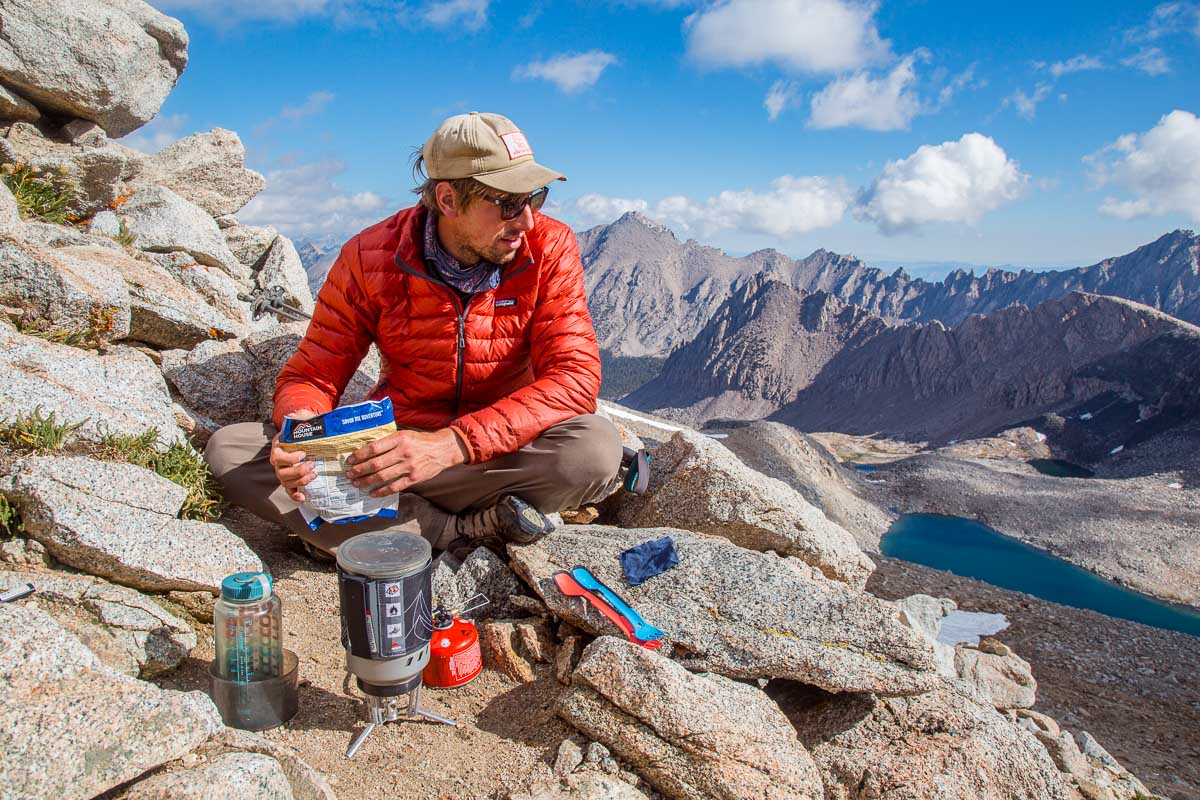
Backpacking lunches, snacks, and bars
When backpacking, the goal is to consume a constant stream of calories throughout the day. This slow drip offers your body a consistent and stable fuel source, preventing your blood sugar from taking a nosedive (i.e. bonking).
So we like to think of hiking as one long, moveable feast. Lots of little backpacking snacks here and there, a big snack in the middle of the day (otherwise called lunch), and then more snacking throughout the afternoon. The key to making this work is variety. Don’t get burnt out eating the same thing over and over.
Here are some of the best backpacking snacks and lunch ideas to pack for your trip!
Greenbelly meal bars
Greenbelly meal bars boast 650 calories per serving and come in a bunch of flavors. They are basically a full meal that requires zero cooking—perfect for lunch on the trail!
No-cook meals
There are a variety of no-cook meal options available, such as Outdoor Herbivore’s Waldorf Salad and Lazy Lentil Salad, and Packit Gourmet’s Curry Mango or Cajun Ranch Chicken Salads.
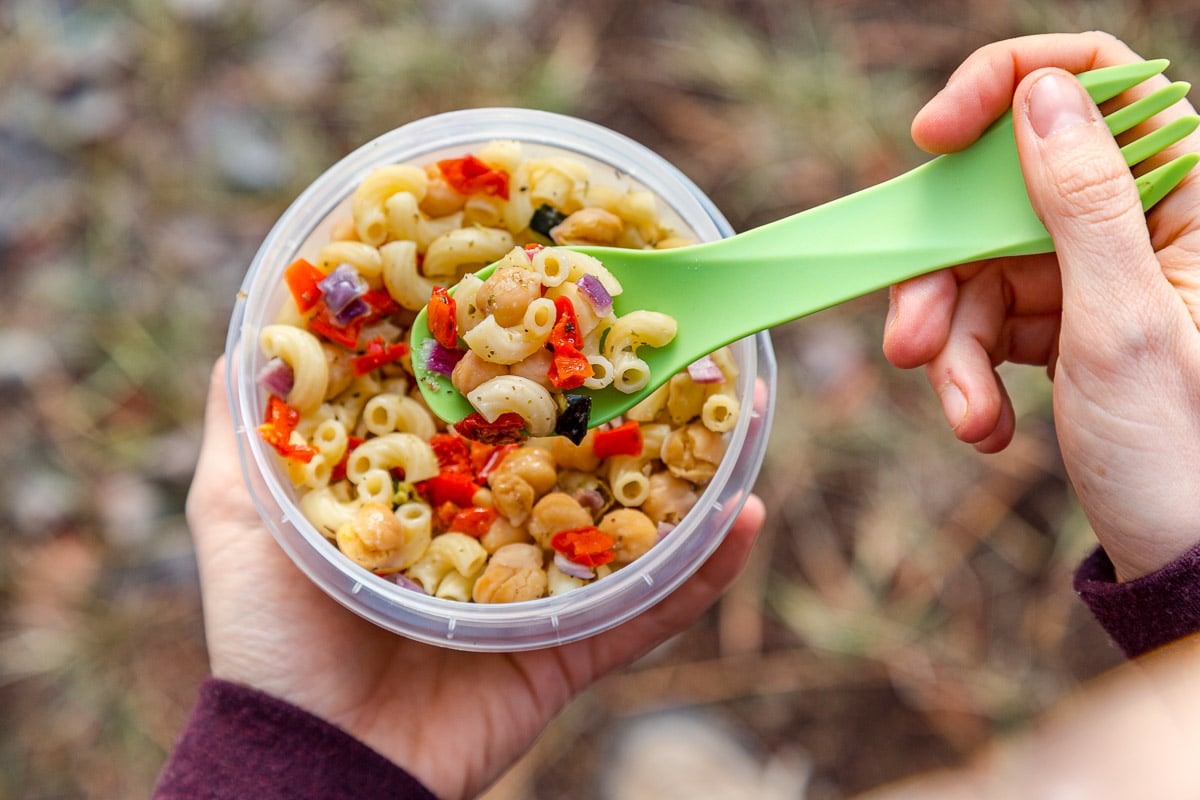
DIY Cold Soak Meals
If you have access to a food dehydrator, try making your own cold-soak meals using a variety of pasta, beans, and veggies. Check out these recipes to start: Pasta Salad or Cowboy Caviar.
Chicken, tuna, or SPAM packets
These might not be the most weight-efficient items in your bear canister, but they do a great job of providing protein. Buy them plain and doctor them up with condiments, or buy some of the many flavor options.
Our favorites were Buffalo Chicken, Chicken Salad, Deli Style Tuna Salad, and Lemon Pepper Tuna.
These wild-caught tuna packets are packed in oil for extra calories.
If salmon is more your speed, Patagonia Provisions has some awesome options.
SPAM also comes in a foil packet and can be a nice change of pace from seafood. We were hesitant about this one, but it’s actually very tasty.
NB: Make sure you’re buying the foil packets, not cans!
Packaroons
These macaroons pack in 170 calories per ounce, so they definitely pull their weight (pun intended) in your pack. They come in a few flavors including Amaretto, Blueberry Almond, and Sweet Coconut.
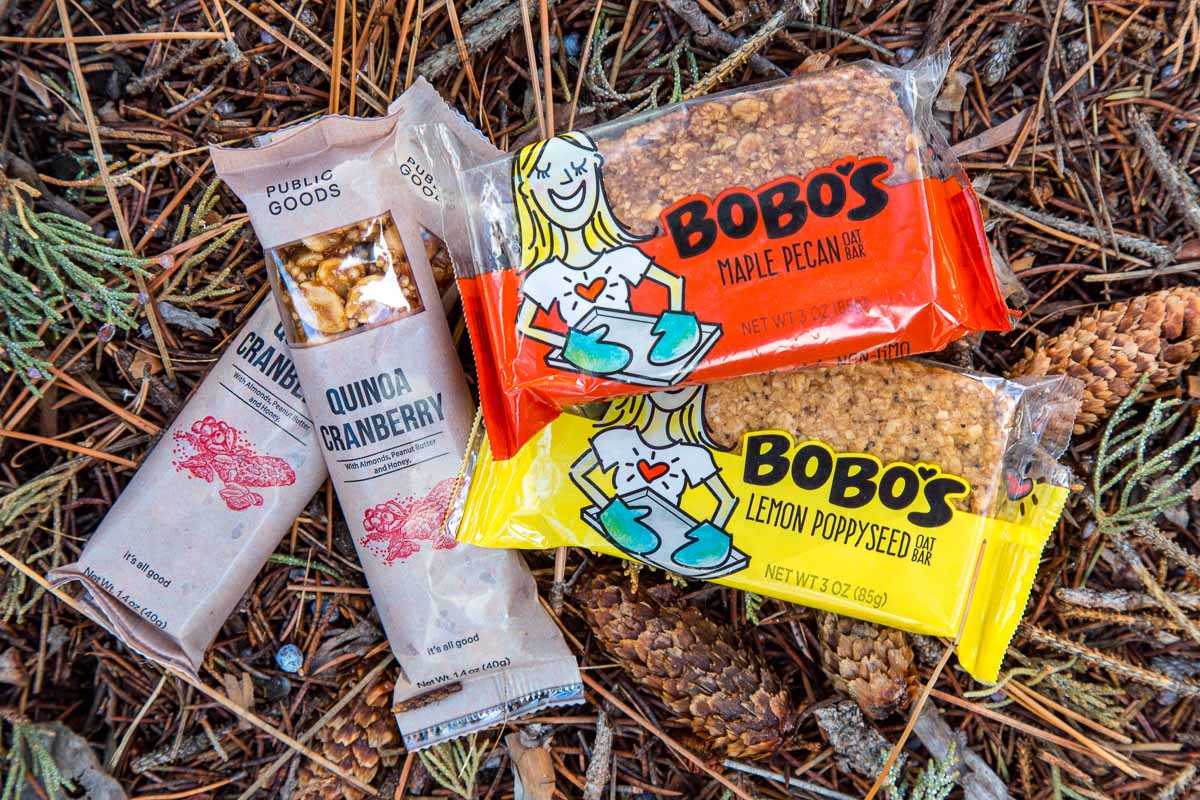
Energy Bars
Our best advice when packing bars is to go for VARIETY. Don’t just load up on your favorite bar for a multi-day hike. Because after your trip, it won’t be your favorite anymore. There are more energy bar companies out there than we can keep track of, but here are some of the top brands that we’ve tried: Bobo, RX Bars, Munkpack Nut & Seeds, Kate’s Real Food bars, GoMacro, Lara Bar, Bearded Brothers, and Aloha.
Peak Refuel Cookie Dough Bites
I was skeptical about these but I’m kind of obsessed with them now! They have both Peanut Butter Chocolate Chip Cookie Dough Bites and Fudge Brownie Bites.
Nut butter
On a tortilla or straight from the packet, nut butter is a great addition to trail lunches. Our favorite on the JMT was RX Vanilla Almond Butter. Justin’s and TrailButter are other good options.
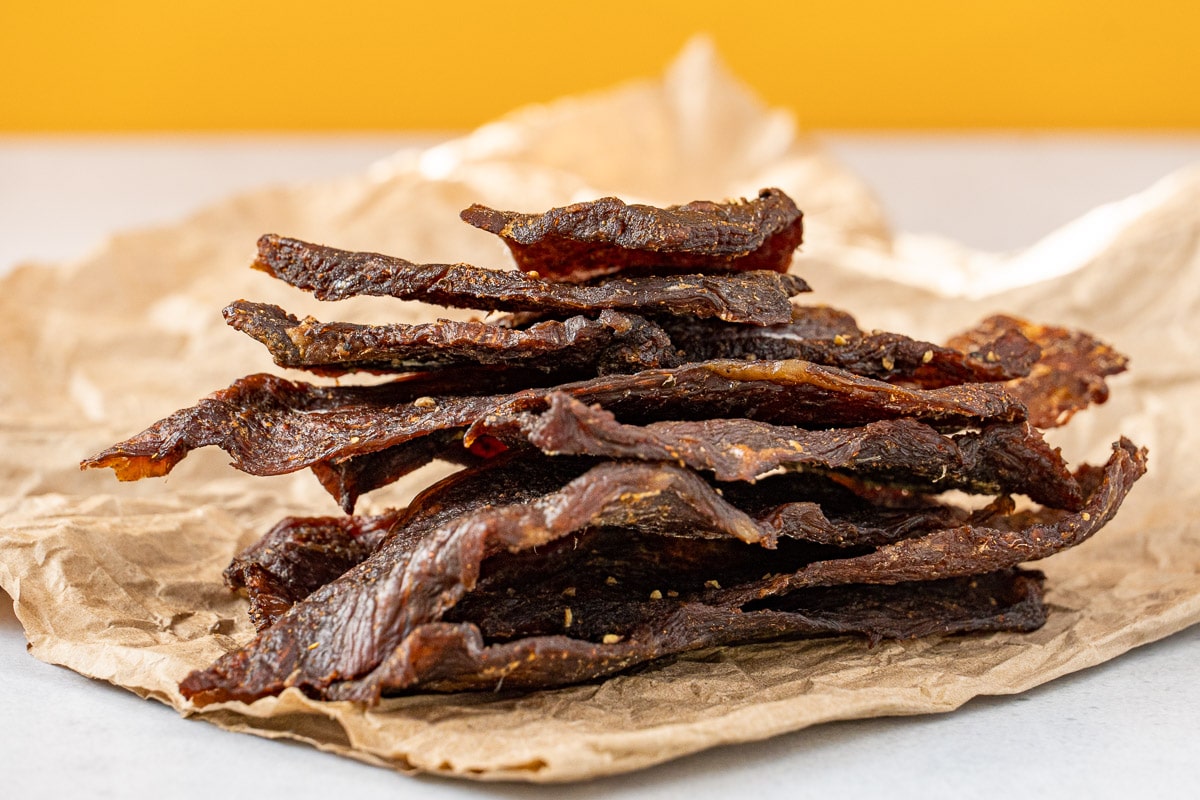
Jerky and meat bars
Jerky and meat bars tend to be a little low on calories, but high in protein — which is critical for muscle repair. We like Epic Provisions and Wild Zora. On longer multi-day hikes, these are good to eat towards the end of the day to help your body repair. Primal Spirit Food and Louisville Vegan Jerky Co are good vegan options to try.
If you have a little bit of experience using a dehydrator, try your hand at making your own jerky! The flavor combinations are endless! Here’s our basic beef jerky recipe, and one for teriyaki beef jerky.
Honey Stinger Waffles
A quick hit of energy, Honey Stingers Waffles are a great little maintenance snack. Perfect for when you’re feeling a little low-energy and need a little extra zip to get you up the next hill. They have a variety of flavors to choose from, and some even have a bit of caffeine for an extra little boost.

Energy Gummies
The solid, chewy form of a gel, there are a variety of energy gummies like Honey Stinger Chews, Clif Shot Bloks, GU Energy Chews, and Scratch Lab Chews These are great to have on hand if you ever start to feel yourself bonking. We think of these as a “Break Glass If In Need of Calories” type of emergency snack.
Tailwind Nutrition
If you’d prefer to drink your calories, Tailwind Nutrition is a great way to do it. One serving holds 200 calories along with 50g of carbohydrates, giving your body some quick energy to use (great if you feel yourself starting to hit the wall!).
Peanut Butter Filled Pretzels
We love peanut butter-filled pretzels! What mad hatter came up with the crazy idea, we don’t know. But they’re amazing. Quinn has a variety of flavors worth checking out like Maple Almond Butter and classic peanut butter.

Olives
We absolutely love olives when backpacking. Not only are they loaded with calories, but they offer a momentary burst of savory refinement that is hard to compare. Instant morale booster. We are big fans of Oloves packable olives, or on shorter trips we’ll pack some in small zip-top bags.
Cheese
Hard cheese and cheeses that are individually packaged are great options. We also LOVE the Trader Joe’s Baked Cheese Bites as well as Parmesan or Cheddar Whisps (the latter are a bit less sturdy though).

Trail mix, nuts, and dried fruit
Packing an assortment of trail mix, nuts, and dried fruits is a great way to have some calorie boosts on hand to eat while hiking (there’s a reason GORP has been handed down through the generations!). Our favorite places for nuts and dried fruit in bulk are Nuts.com and Trader Joe’s. You can find some of our favorite trail mix recipes here.
Drying your own fruit is a great way to cut costs and take advantage of seasonal produce when it’s on sale. We love dried apples, dehydrated bananas, pineapple, and kiwis!

Candy
The snack we didn’t pack enough of for the JMT but we wish we did: Candy! We’re not candy people normally, but the calorie and mid-day sugar boost would have been awesome. Black Forest Gummy Bears, Swedish Fish, or Jelly Belly’s “Sports Beans” are all good picks. Whatever you pick, make sure it won’t be too melty.
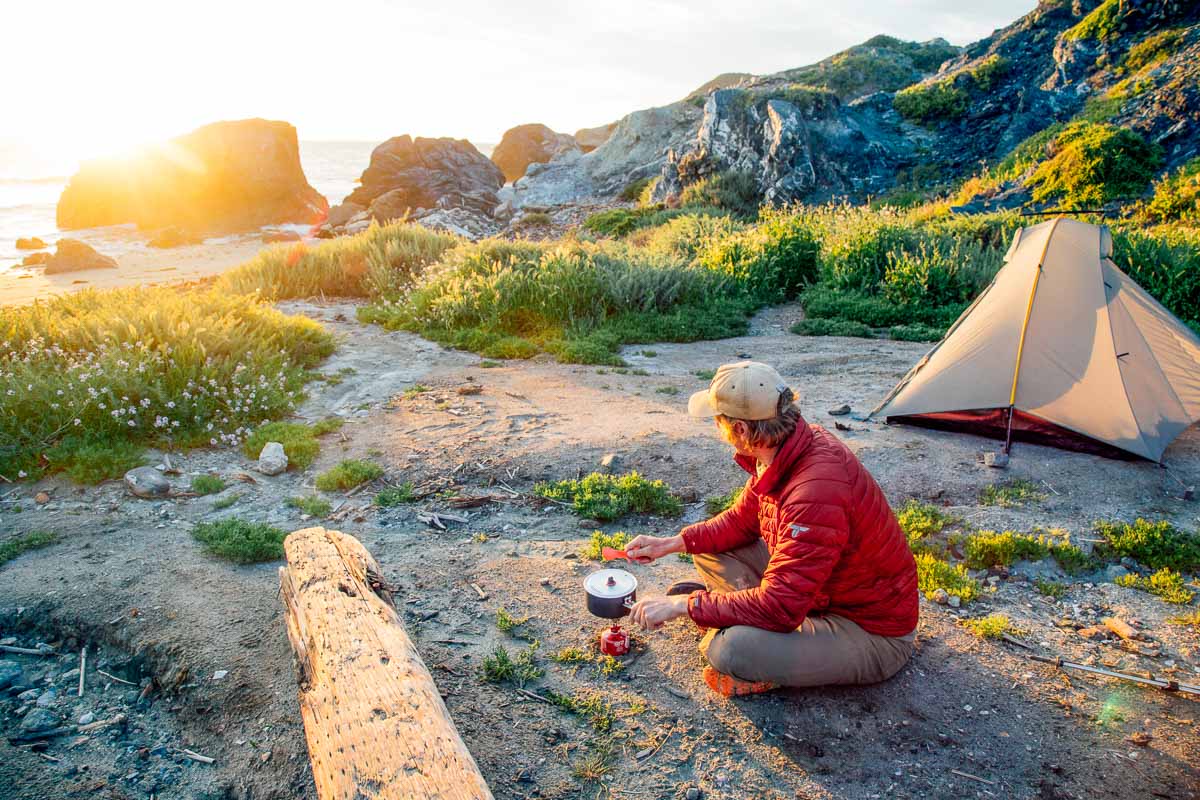
Backpacking dinners
After a long day on the trail, one of the best things is taking off your pack, finding a comfortable stop to sit, and enjoying a hot dinner! This is why it’s so important to find a meal that will end your day on a happy and satisfying note.
While there are more backpacking dinner options to choose from than ever before, our suggestion is to stick to your pre-existing food preferences. If a meal sounds good to you now, you will likely love it after a long day of hiking. But if you’re not an adventurous eater at home, then you’re likely not going to magically become one on the trail.
Here’s a list of some of the best backpacking food brands along with a few of their top-rated entrees:
Backpacker’s Pantry
Backpacker’s Pantry makes one of our favorite freeze-dried backpacking meals of all time (Chicken Pad Thai), and their production line runs 100% on solar energy, which is pretty cool. Here are a few favorite meals:
Farm to Summit
Farm to Summit makes dehydrated backpacking meals with low-impact packaging and seasonal farm-fresh produce. Meals to check out:
Good-To-Go
Producing dehydrated meals from quality ingredients, Good To-Go has really expanded its lineup in the past few years. We’ll be honest, in our personal experience, we’ve had some winner and loser meals from them. Nothing was bad, we just found a few meals to be tragically undersalted. Meals to check out:
Heather’s Choice
Based in Anchorage, Alaska, Heather’s Choice uses high-quality, whole foods ingredients to create packable, dehydrated provisions. We have not personally tried these meals yet, but they get good reviews online. They are gluten and dairy-free and have a diverse range of flavors. Meals to check out:
Mountain House
The OG of backpacking meals, Mountain House has been making freeze-dried food since the 1970s. Over the years they have developed some absolute classic meals that remain some of our favorites:
Nomad Nutrition
Based in British Columbia, Canada, Nomad Nutrition offers an entirely plant-based line of dehydrated backpacking meals. Whether you’re a vegan, vegetarian, or just looking to scale down your meat consumption on the trail, this is a great company to look into. Meals to check out:
Peak ReFuel
Even though they are relatively new to the space, Peak ReFuel feels like it’s been around for a while. That might be because their founder spent nearly a decade in the freeze-dried world before branching out to launch Peak ReFuel. They offer a lot of comfort food classics that are sure to hit the spot. Meals to check out:
Gastro Gnome
Founded by a formally trained chef, Gastro Gnome boasts a menu of legit freeze-dried meals like Indian Yogurt Braised Chicken, Mushroom Ragu Farfalle, Chicken Pozole, and Montana Beef Shepherd’s Pie.
Outdoor Herbivore
Vegetarian and vegan hikers will find tons of options at Outdoor Herbivore. The Basil Walnut Penne and Switchback Burrito Stuffer sound great.
Packit Gourmet
This is a small company out of Texas that specializes in dehydrated fare. We’re looking forward to trying the Texas State Fair Chili, Tortilla Soup, or the Fajita Chicken Burrito on our next trip!
Wild Zora
Based in Colorado, Wild Zora specializes in low-sugar, high-protein, gluten-free, and Paleo backpacking meals. They also offer a line of AIP (autoimmune protocol) meals. If you have any dietary restrictions, this is a great company to check out. We’ve heard great things about the Bedrock Beef Chili.
Save some cash! If you buy 8 or more backpacking meals at a time from REI, you’ll automatically get a 10% discount on all of them!
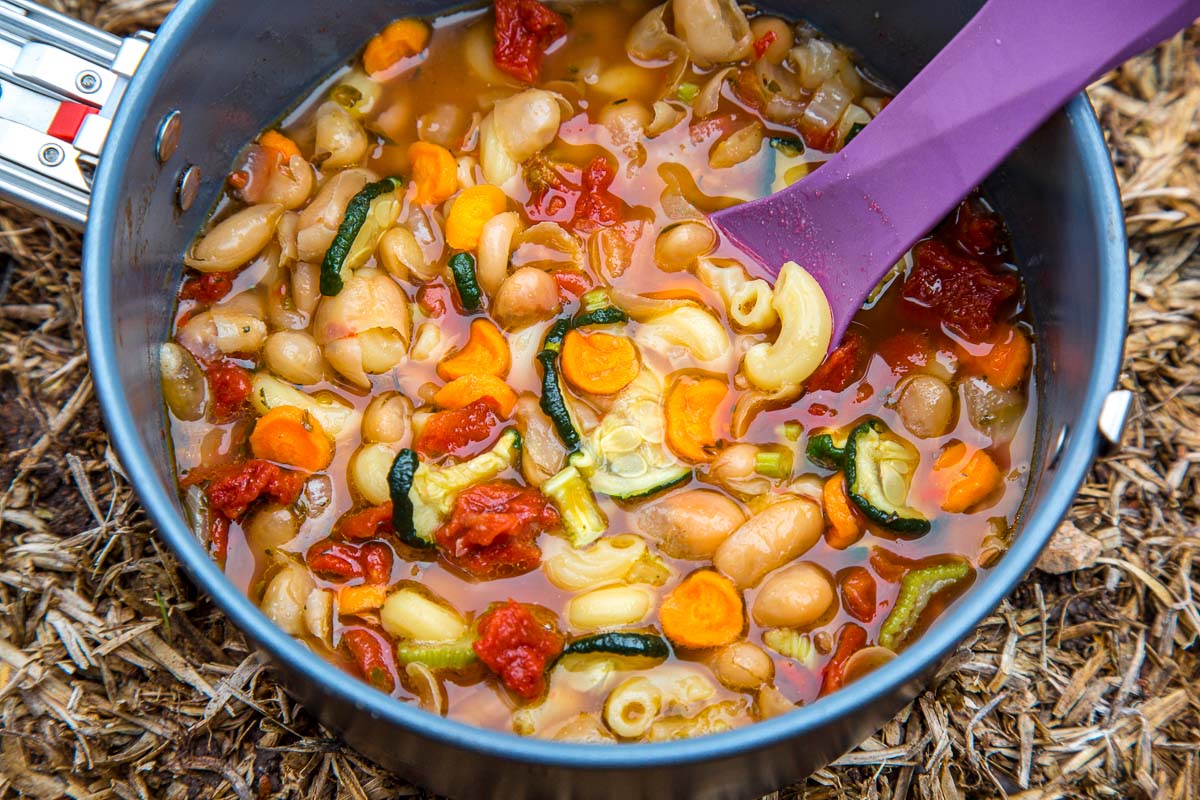
DIY Backpacking Meals
The sky’s the limit if you’re up to making your own homemade meals. While we’ve developed a lot of different backpacking recipes over there years, we’ll give you a shortlist of our some of our favorites meals (ssh, don’t tell the others!):
Dehydrator Recipes:
No Dehydrator Required:
More DIY Backcountry Meal Resources:
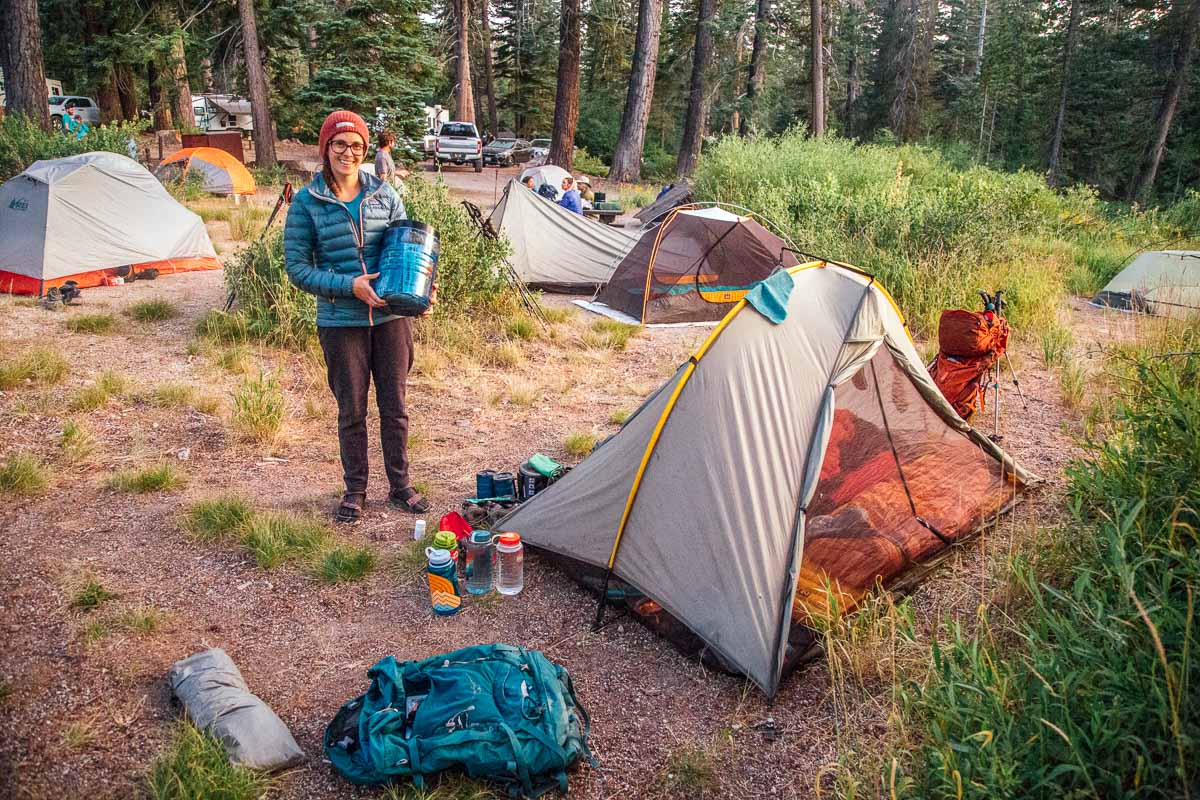
Grocery store backpacking food ideas
Whether you’re making your own custom meals or looking for a way to stretch a freeze-dried meal, there are a bunch of store-bought ingredients you can pack along.
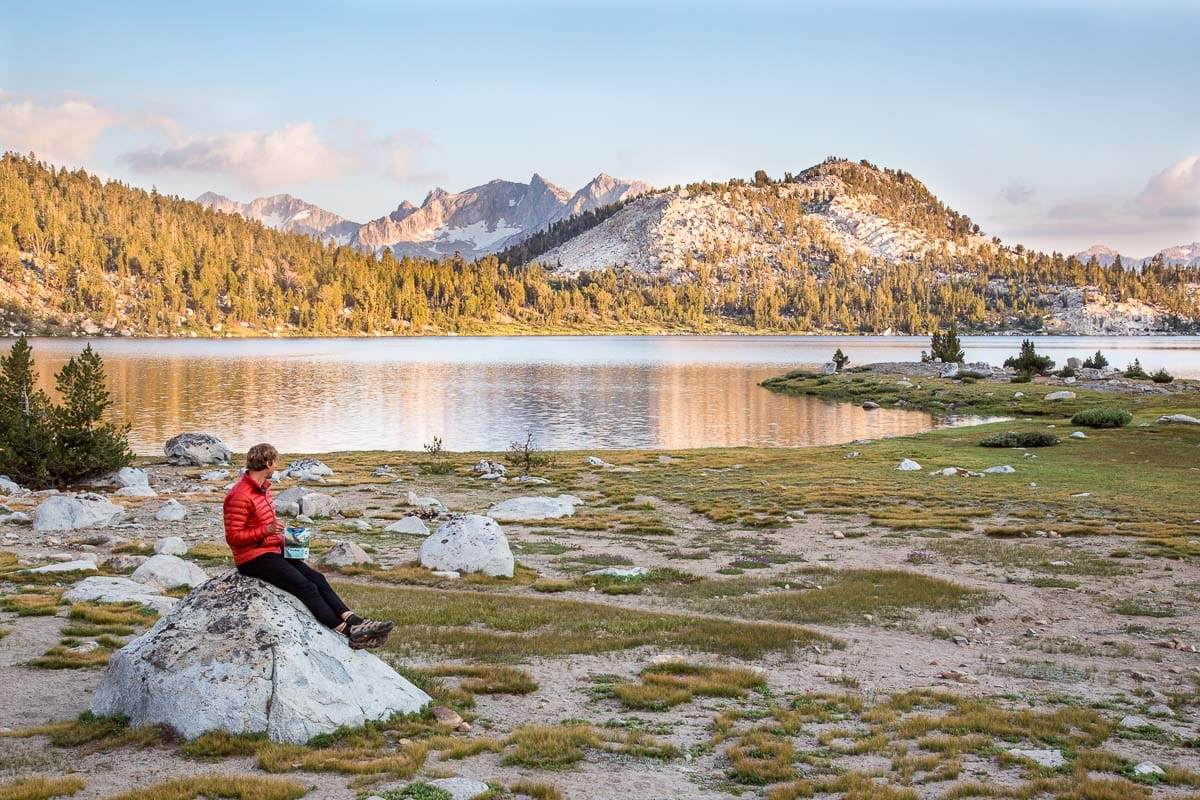
Desserts
When developing your backpacking meal plan, desserts absolutely have a place! As a special treat to mark a notable day, a morale booster after a real doozy, or just a way to pad out your dinner’s calorie count, backpacking desserts are a great trick to have in the bottom of your bear barrel.
Freeze-dried desserts
There are a number of freeze-dried dessert options on the market, whether you prefer something homey like Cinnamon Apple Crisp or Blueberry Peach Crisp, something fancy like Creme Brulee, or something totally space-age like this Neapolitan Ice Cream.
Treehouse Drinking Chocolate
If you don’t necessarily want to eat dessert, consider drinking it! This drinking chocolate (AKA totally indulgent hot chocolate) is an absolutely lovely way to wind down at camp.
Nutella
This chocolate hazelnut spread is packed with calories that are derived mostly from fats, making it well worth the weight. A scoop here and there will give your body plenty of long-lasting fuel to burn. Plus, it’s freaking delicious!
Stroopwafels
A delicious Dutch treat, stroopwafels are soft, toasted waffles filled with caramel. They’re loaded with calories and pretty durable. Try spreading a little Nutella between two of them and make yourself an “ice cream” sandwich.
Condiments and extras
These are some of our favorite extras to add either calories or flavor to our meals.
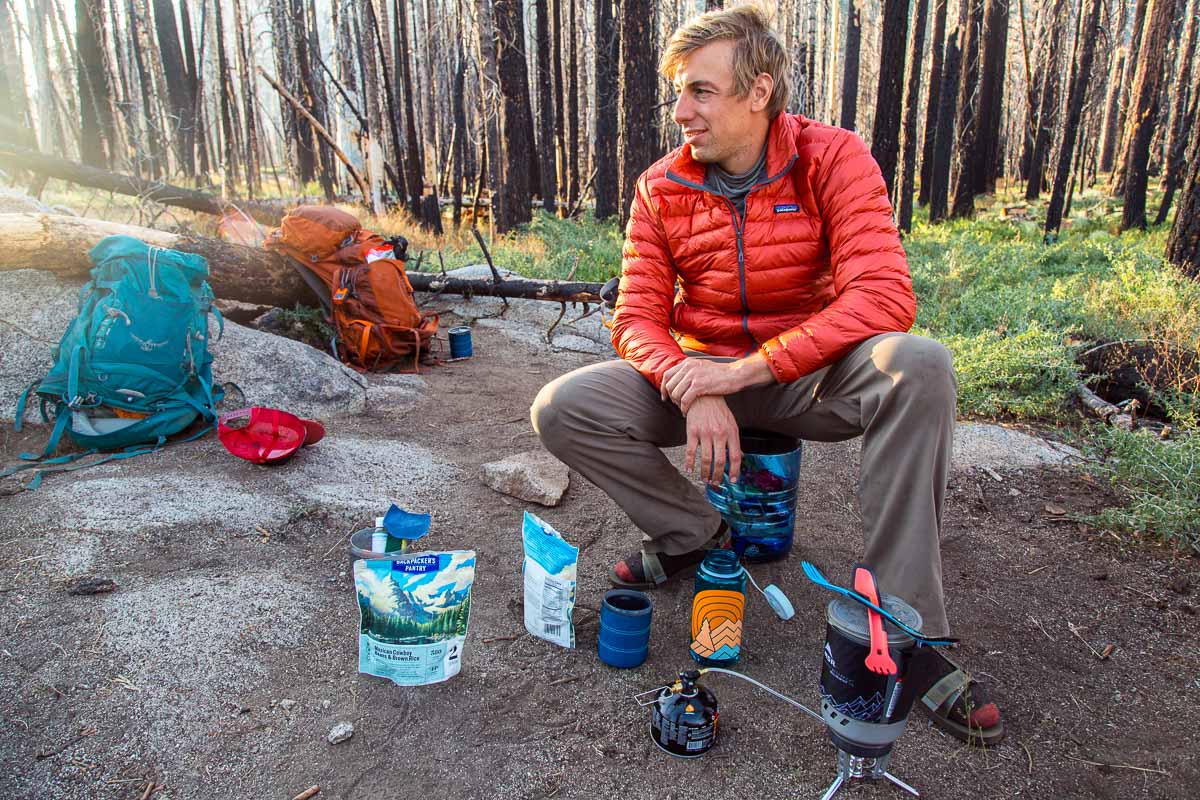
Backpacking Food Strategy
In this section, we’ll dive into everything you need to know about making a backpacking meal plan—what to look for when choosing meals, packing the right amount of food you need, tips for planning and packing, and a few gear suggestions.
What makes for good backpacking food?
There are a few factors to keep in mind to determine the types of food that are good for backpacking: shelf-stable, weight, calorie density, and cook speed.
Shelf-Stable: It’s important that the food can be stored at room temperature. You can get away with bringing some things like cheese or salami if you eat them in the first few days, but for the most part, you want to skip anything perishable.
Lightweight: Since you have to carry it every step of the way, backpacking food should be as lightweight as possible. Dehydrated and freeze-dried foods tend to be lightest, though there are plenty of everyday grocery store items that fit the bill as well!
Calorie Dense: Backpacking takes a lot of energy, so you need food that can properly refuel you. When we plan our backpacking food, we try to average 125+ calories per ounce to keep the weight down.
Cooking Time: Consider how much patience you have to cook your food and how much fuel you will be bringing. We highly recommend quick-cooking meals that are easy to prepare
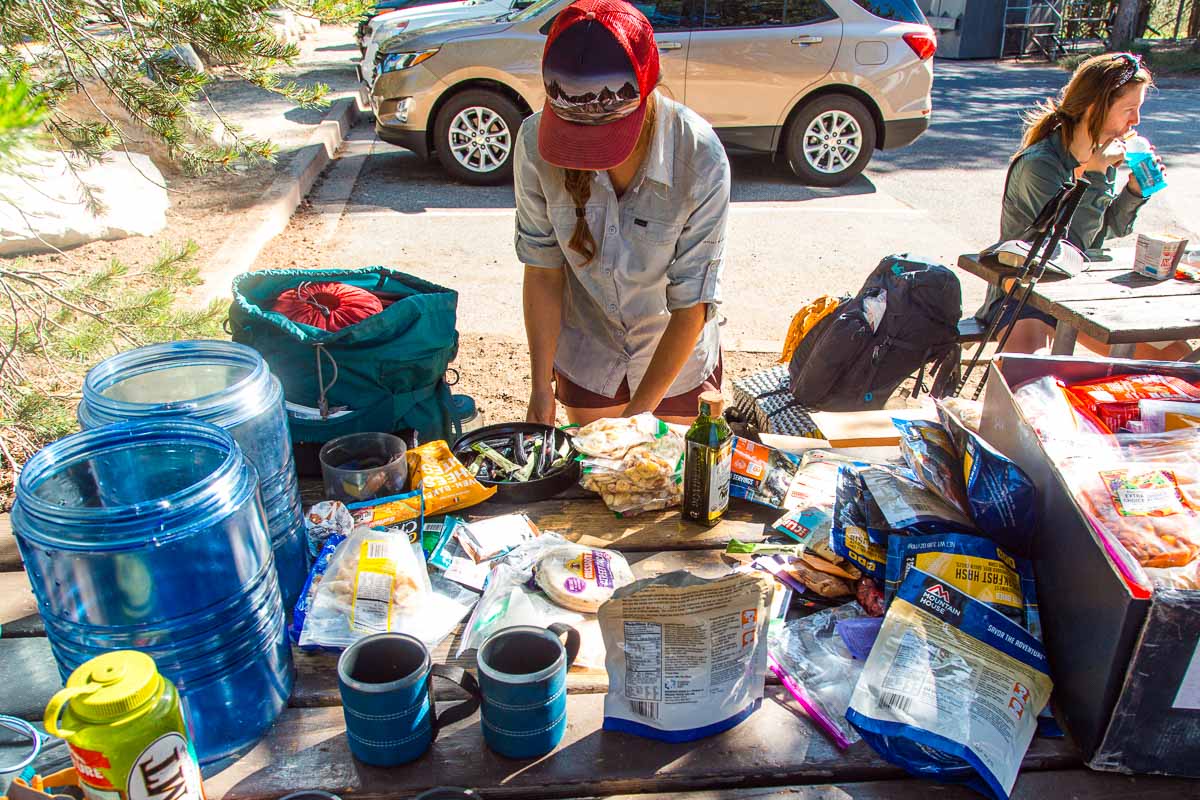
How much food should you pack for backpacking?
Backpacker magazine suggests that backpackers who plan to hike long days with a heavier pack should aim for 25-30 calories per pound of body weight, per day.
If you’re going to do shorter days (less than 2 hours of hiking) or will cover less strenuous terrain, you can scale it down to 21-25 calories per pound of body weight, per day.
Instead of eating just three meals per day as you might at home, aim to eat snacks throughout the day and consume 30-60 grams of carbohydrates per hour (source) to keep your energy high and prevent you from hitting the proverbial wall.
These, of course, are just a starting point and you should adjust based on your own experience.
How to plan food for backpacking trips
Meal planning for backpacking trips is one of our favorite things to do! It’s also super important.
Creating a detailed meal plan not only ensures you bring enough food for your trip but allows you to see how all your meals will work together. It’s a great opportunity to build in variety and double-check that you’ll be hitting your calorie count every day.
Here are the steps that go into our meal-planning strategy:
1.) Figure out how many days your trip will be and how many meals you will need on the trail.
2.) Determine how many calories per day you need to pack (see the previous section).
3.) Choose your breakfast and dinner for each day. Take note of how many calories are in each of these.
4.) Subtract the calories of your breakfast and dinner from your total calorie number. These are the remaining calories that you’ll need to pack in the way of snacks, lunch, drink mixes, or dessert. Plan for a variety of snacks, keeping in mind that to avoid losing steam during the day, you’ll want to eat 30-60 grams of carbohydrates per hour as you hike.
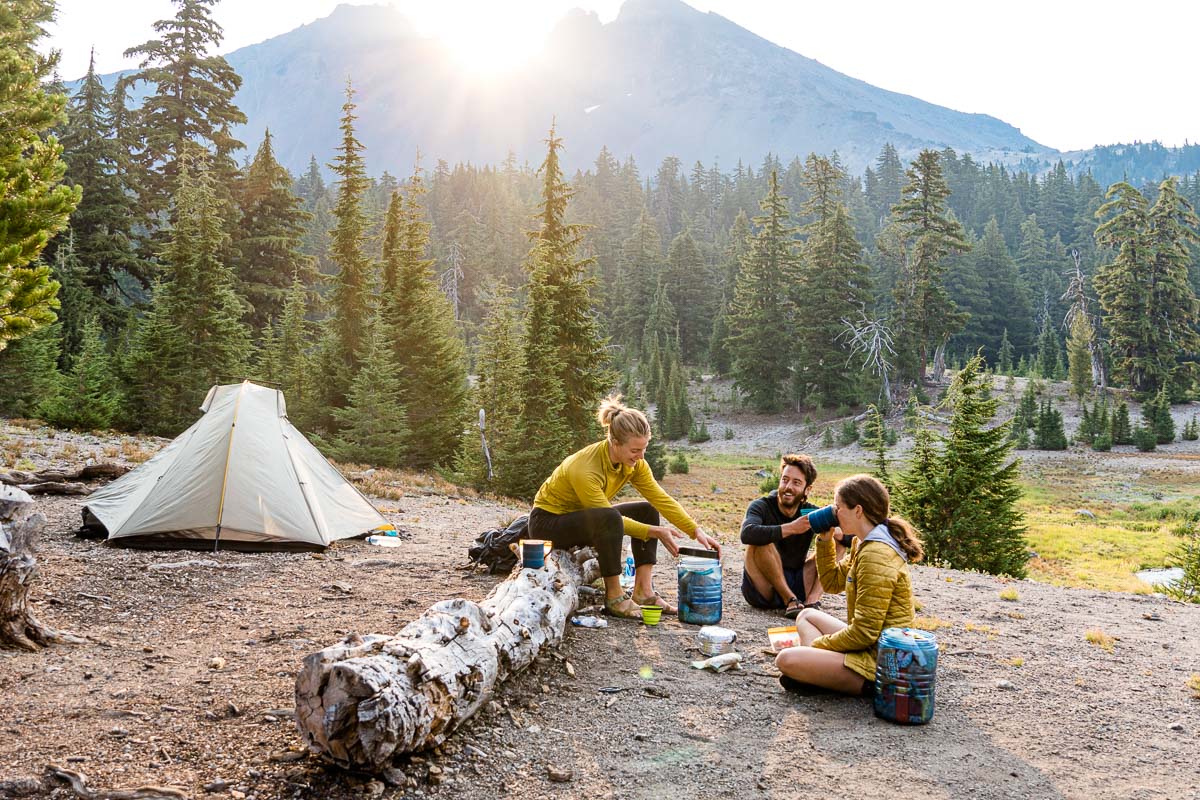
Best backpacking meal tips
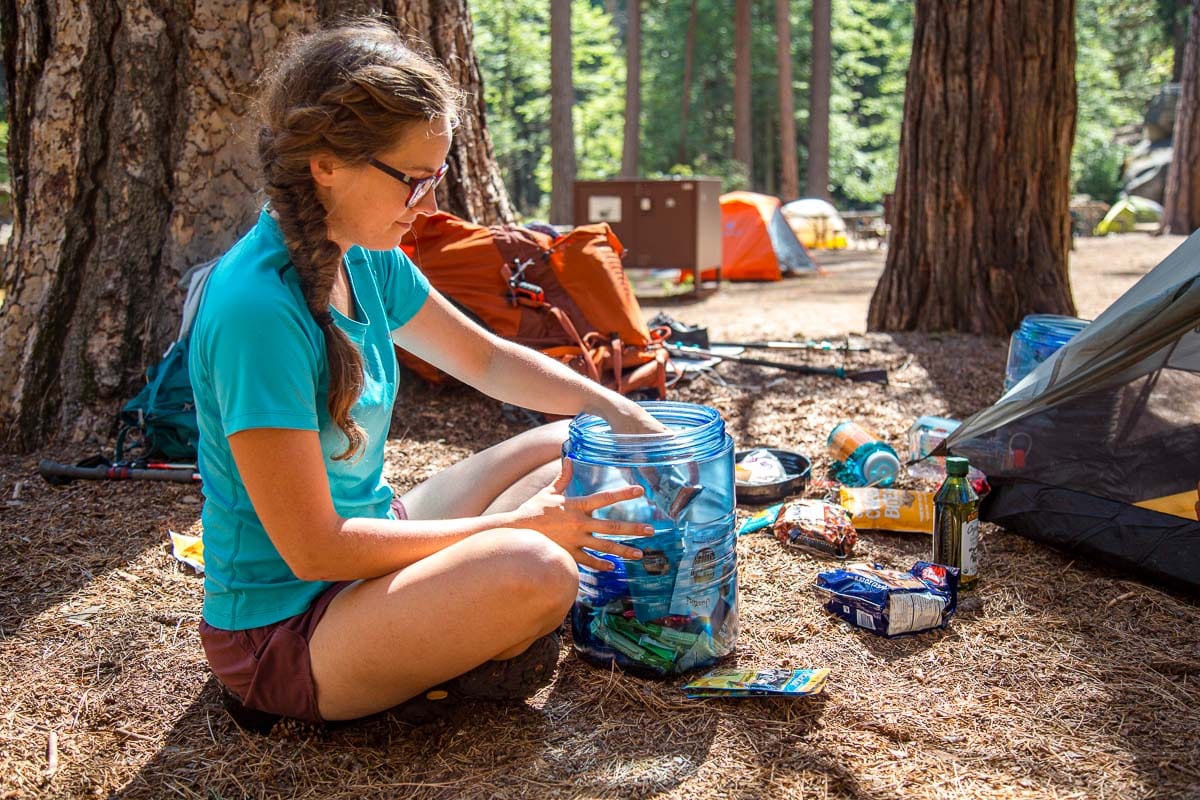
Packing & food storage tips

Favorite backpacking cooking gear
We have whole posts dedicated to backpacking cooking gear and backpacking stoves, but here are some of our favorite gear items to prepare your backcountry food on the trail.
Looking for more backpacking food resources? Check out our guides to vegan backpacking food, gluten-free backpacking food, these lightweight backpacking recipes, and our ultimate guide to dehydrating food for backpacking!
This post was first published on November 9, 2017, and was updated in 2024. There are a ton of new backpacking food products that we included!


